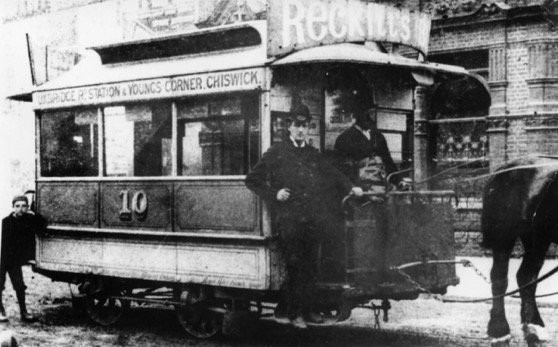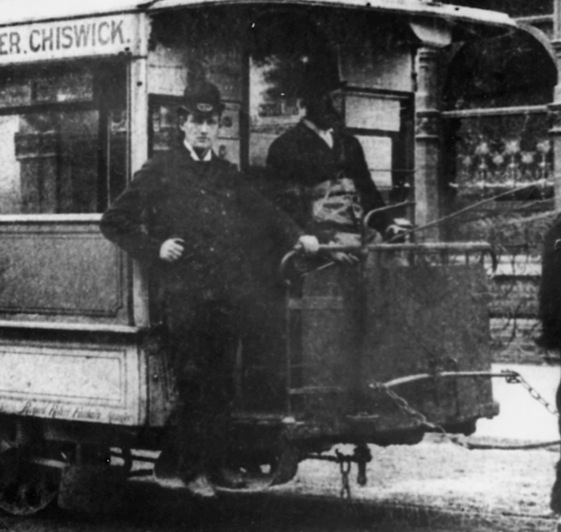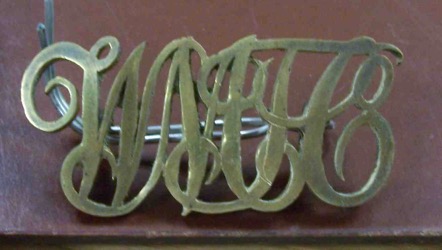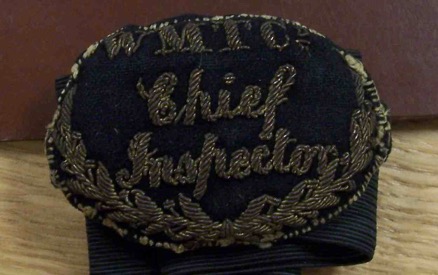West Metropolitan Tramways Company
History
The West Metropolitan Tramways Company Ltd was formed in August 1881 to acquire the tramway assets of the Reid Brothers, which included the Southall, Ealing and Shepherds Bush Tramway, as well as an almost-finished extension to it from Shepherds Bush to Young's Corner along Goldhawk Rd, and powers for further lines in Hammersmith. The WMTCo took possession on the 6th March 1882.
The company quickly acquired further powers for build a line to Kew Bridge and from there across the Thames to Richmond, though it was destined never to lay lines across the bridge, due to its unsuitability for tramcars. After these lines were built, the company tried repeatedly to expand to the west through Acton and to the east beyond Hammersmith, but ran into insuperable opposition from various interests. By 1884, passenger receipts were dropping, and shareholder dissatisfaction was growing. Attempts were made at various junctures by groups of shareholders to oust the management and chairman, and for long periods, the company appears to have spent much of its energy dealing with internal politics rather than the deteriorating state of its infrastructure.
The company's coffers were however empty, in part due to the heavy maintenance costs on the life-expired track, and appeals to the shareholders for further funding fell on deaf ears. Although the company was undoubtedly mismanaged, it probably had little choice at this juncture other than to withhold dividends in an attempt to deal with the track problems, something that enraged the shareholders even further. The state of the track on the Uxbridge Rd line was of particular concern, the company having lost the good will of the local authorities with repeated empty promises, such that one of them (Action Local Board) eventually obtained a writ compelling it to put the track in order.
Matters however reached a head in 1894 when the exasperated debenture holders, who had completely lost faith in the management of the company, applied for a court order to take the company into receivership. The man given the job — on the 24th August 1893 — was George White, who was a leading light in the Bristol Tramways and Carriage Company Ltd, and also a WMTCo debenture holder. His job was to put the company into a position where it could be sold, thus raising money to pay off the disgruntled debenture holders. Perhaps unsurprisingly, this did not go down well with the directors, who were major shareholders and thus likely to end up empty handed. The relationship between them rapidly deteriorated, with the Receiver's attempts to restructure the company coming to nought. The trams stopped running on the 6th of March 1894, and White took the only course left open to him, requesting the court to approve the sale of the company's assets. The company was duly auctioned on the 13th June 1894, but no bids were received. The undertaking was however sold by private arrangement on the 6th August 1894 to one August Krauss, whose offer was accepted by the debenture holders, who thus recovered most of their money, whilst the other shareholders received nothing.
August Krauss was in fact an agent acting on behalf of the Imperial Tramways Company Ltd, which was controlled by George White. The tramway was then transferred (on the 20th August 1894) to a new company — London United Tramways Limited — chaired by George White.
Uniforms
The West Metropolitan Tramways Company operated horse cars for approximately twelve years, from March 1882 through to March 1894.
In common with many horse tramway operators, the WMTCo does not appear to have issued its drivers with uniforms. The situation with respect to conductors is however much less clear, as photographs which show them, and which can be firmly dated to this era, appear not to have survived (the LUTCo continued to operate horsecar services for many years after the demise of the WMTCo). A metal script-lettering badge — WMTCo — has however survived; this has standard lug fittings, suggesting that it was either affixed to a cap or possibly to a jacket. It is very tempting — given the absence of photographic evidence — to suggest that this script-lettering badge is a conductor's cap badge, and that conductors were therefore at least issued with company caps.
The one clear photograph that has survived (see below) suggests that horsecar drivers wore informal but smart attire, namely, heavy-duty jackets, shirts and ties, along with the ubiquitous bowler hat. This photograph clearly shows one individual wearing a cap badge on his bowler hat, a practice only employed elsewhere by the London County Council Tramways. Indeed, an example of a 'bowler hat' WMTCo cap badge has survived, which comprises an embroidered cloth oval mounted on an elasticated band, presumably to attach it to whatever hat the user was wearing. This example is for a Chief Inspector, so it seems more than reasonable to assume that other senior grades also wore these badges, for example, inspectors. Whether this approach extended down to drivers and conductors is currently unclear, and certainly no cloth badges for these grades have survived.
Further reading
For a history of the West Metropolitan Tramways Company, see: 'The London United Tramways, Volume 1 — Origins to 1912' by C S Smeeton; The Light Rail Transit Association and The Tramway and Light Railway Society (1994).
Images
Horse tram drivers and conductors
West Metropolitan Horsecar No 10 posed at The Lawn, Shepherds Bush, and though not clear on this copy, it can be dated to between 1891 to 1894 by the name of the manager — R R Fairbairn — on the rocker panel (lower right). Photo courtesy of the Tramways and Light Railway Society, with thanks to David Voice.
A blow-up of the above photo showing the two men on the driver's platform, both of whom are smartly attired. The man on the step is probably an inspector, as he appears to be wearing an oval cap badge very similar to the 'Chief Inspector' example shown below.
Cap/lapel badge — brass. It is unclear what this badge was used for, but given the paucity of photographic evidence, it may well have been worn by conductors. With thanks to the National Tramway Museum.
Senior staff
Chief Inspector cap badge — cloth on an elastic hat band. With thanks to the National Tramway Museum.